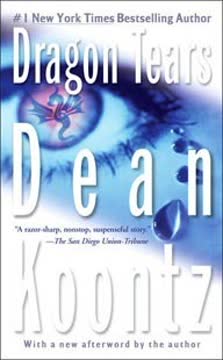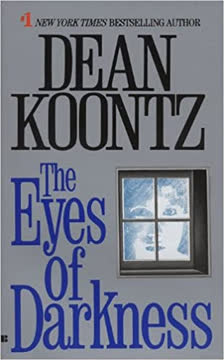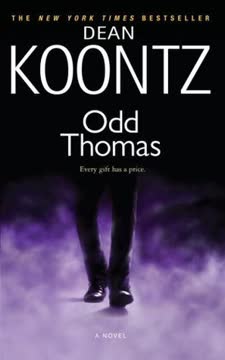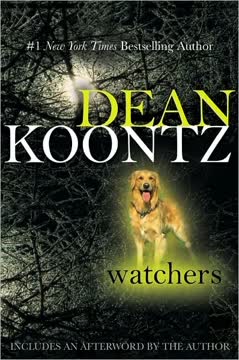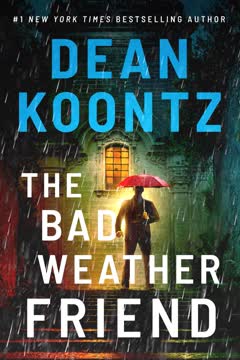Plot Summary
A Day Turns Deadly
Harry Lyon, a meticulous police detective, begins his day with a sense of order, enjoying breakfast and the view from his well-kept home. However, his day takes a dark turn when he is forced to shoot a man during a lunch break. This incident sets off a chain of events that threaten to unravel his carefully maintained world. The shootout leaves Harry shaken, and he soon finds himself haunted by a mysterious vagrant who delivers a chilling prophecy: Harry will be dead by dawn.
The Haunting Prophecy
After the shootout, Harry encounters a homeless man who chants a disturbing prediction of Harry's death by dawn. This encounter leaves Harry deeply unsettled, as the vagrant's eyes are unnaturally red, and his presence seems to defy reality. The prophecy lingers in Harry's mind, casting a shadow over his thoughts and actions as he struggles to maintain his grip on reality.
A World Unraveling
As Harry grapples with the vagrant's prophecy, he finds himself questioning his own sanity. The world around him seems to shift and change, with strange occurrences and inexplicable events challenging his understanding of reality. Harry's once orderly life is thrown into chaos, and he is forced to confront the possibility that something supernatural is at play.
The Unseen Threat
Harry's investigation into the shootout and the vagrant's prophecy leads him to suspect that a malevolent force is at work. He begins to piece together a theory that the vagrant is not just a man, but a being with supernatural powers. This revelation forces Harry to reconsider everything he knows about the world and his place in it, as he races against time to uncover the truth.
A Desperate Search
Determined to find answers, Harry teams up with his partner, Connie Gulliver, to investigate the mysterious events surrounding the shootout. Their search takes them to the morgue, where they hope to find clues in the autopsy report of the man Harry shot. As they delve deeper into the mystery, they realize that they are up against a force far more powerful and dangerous than they could have imagined.
A House of Mirrors
Harry and Connie infiltrate Bryan Drackman's house, a place of eerie reflections and empty rooms. The house is a labyrinth of mirrors, creating a disorienting environment that reflects the chaos of Bryan's mind. As they search for him, the mirrors seem to multiply their images, adding to the tension and confusion. The house is devoid of furniture, emphasizing Bryan's detachment from reality and his obsession with his own image. The unsettling atmosphere foreshadows the confrontation with Bryan, who is more dangerous than they can imagine.
The Dog's Intuition
Woofer, the dog, plays a crucial role in leading Harry and Connie to Bryan's house. His instincts and actions suggest a deeper understanding of the threat they face. Woofer's behavior is a pivotal plot device, as he senses the danger and guides the group to safety. His actions highlight the theme of intuition and the bond between humans and animals. Woofer's presence provides a sense of hope and companionship in the face of the supernatural threat posed by Bryan.
A Mother's Dark Secret
Jennifer Drackman, Bryan's mother, shares the harrowing story of her son's birth and her own descent into madness. Her tale reveals the origins of Bryan's powers and his malevolent nature. Jennifer's account is filled with regret and fear, as she describes the supernatural abilities that Bryan developed from a young age. Her story adds depth to Bryan's character, showing the impact of his powers on those around him. It also highlights the theme of parental responsibility and the consequences of neglect and fear.
The Final Confrontation
Harry and Connie face Bryan in a tense showdown. The battle is intense, with Bryan using his supernatural powers to fight back. However, Harry and Connie's determination and teamwork ultimately lead to Bryan's defeat. The confrontation is a culmination of the tension and fear that has been building throughout the story. It emphasizes the themes of courage and resilience in the face of overwhelming odds. The victory is bittersweet, as it comes at a great cost, but it also brings a sense of closure and justice.
A New Beginning
In the aftermath of Bryan's defeat, Harry, Connie, and the others find a sense of peace and hope. They come together as a makeshift family, finding solace in each other's company. Woofer, the dog, becomes a symbol of their newfound unity and the bond that has formed between them. The chapter highlights the theme of redemption and the possibility of healing after trauma. It ends on a hopeful note, suggesting that even in the darkest times, there is a chance for renewal and happiness.
Characters
Harry Lyon
Harry Lyon is a dedicated police detective known for his orderly life and adherence to rules. His world is turned upside down after a deadly shootout and a haunting prophecy from a mysterious vagrant. As he grapples with the unraveling of his reality, Harry is forced to confront his deepest fears and question everything he knows.
Connie Gulliver
Connie Gulliver is Harry's partner, known for her fearless approach to police work and her ability to handle high-pressure situations. She is a complex character with a tough exterior, shaped by a difficult past. As she joins Harry in the search for answers, Connie strength and determination become crucial in facing the supernatural threat.
The Vagrant
The vagrant is a haunting presence in Harry's life, delivering a chilling prophecy of his death. With unnaturally red eyes and an ability to defy reality, the vagrant represents a malevolent force that challenges Harry's understanding of the world. His true nature and intentions remain shrouded in mystery.
Ricky Estefan
Ricky Estefan is Harry's former partner and close friend, whose life is tragically affected by the events set in motion by the vagrant's prophecy. Ricky's fate serves as a catalyst for Harry's desperate search for answers, highlighting the personal stakes involved in the unfolding mystery.
Jennifer
Jennifer is a patient in a care home, whose life has been devastated by encounters with the supernatural force. Her story serves as a chilling reminder of the vagrant's power and the far-reaching impact of his malevolent influence.
Bryan Drackman
Bryan is a young man with extraordinary supernatural abilities, stemming from a troubled childhood and a mother who feared him. His powers make him a formidable and dangerous adversary. Bryan's character explores themes of power, control, and the consequences of unchecked abilities. His desire for love and acceptance is twisted by his psychosis, leading him to commit horrific acts. Bryan's story is a cautionary tale about the dangers of power without empathy or understanding.
Jennifer Drackman
Jennifer is Bryan's mother, whose fear and regret over her son's birth and powers have consumed her life. Her story reveals the origins of Bryan's abilities and the impact they have had on her. Jennifer's character explores themes of parental responsibility, fear, and the consequences of neglect. Her relationship with Bryan is complex, filled with guilt and a desire for redemption. Jennifer's tale adds depth to the narrative, highlighting the human cost of Bryan's actions.
Woofer
Woofer is a dog with an uncanny ability to sense danger and guide the group to safety. His actions are pivotal in leading Harry and Connie to Bryan's house. Woofer's character symbolizes loyalty, intuition, and the bond between humans and animals. He provides a sense of hope and companionship in the face of the supernatural threat. Woofer's presence highlights the theme of intuition and the importance of trusting one's instincts.
Plot Devices
The Prophecy
The vagrant's prophecy of Harry's death by dawn serves as the central plot device, driving the narrative forward and creating a sense of urgency. This prophecy challenges Harry's understanding of reality and forces him to confront the possibility of supernatural forces at play.
Supernatural Elements
The presence of supernatural elements, such as the vagrant's ability to defy reality and the strange occurrences surrounding Harry, serve as key plot devices. These elements create an atmosphere of suspense and mystery, pushing the characters to question their beliefs and face their fears.
The Search for Answers
Harry and Connie's investigation into the shootout and the vagrant's prophecy serves as a driving force in the narrative. Their search for answers leads them to confront the unthinkable and forces them to navigate a world where the lines between reality and the supernatural are blurred.
Mirrors
The use of mirrors in Bryan's house serves as a plot device to create a disorienting and unsettling atmosphere. The reflections multiply the characters' images, adding to the tension and confusion. The mirrors symbolize Bryan's obsession with his own image and his detachment from reality. They also highlight the theme of perception and the difficulty of distinguishing between reality and illusion.
Woofer's Intuition
Woofer's ability to sense danger and guide the group to safety is a key plot device. His actions highlight the theme of intuition and the bond between humans and animals. Woofer's presence provides a sense of hope and companionship in the face of the supernatural threat. His intuition is crucial in leading Harry and Connie to Bryan's house, setting the stage for the final confrontation.
Jennifer's Story
Jennifer Drackman's account of her son's birth and powers serves as a plot device to provide background and context for Bryan's character. Her story reveals the origins of his abilities and the impact they have had on those around him. Jennifer's tale adds depth to the narrative, highlighting the human cost of Bryan's actions and exploring themes of parental responsibility and fear.
Analysis
Dean Koontz's "Dragon Tears" is a gripping exploration of the battle between order and chaos, reality and the supernatural. Through the lens of a police procedural, Koontz delves into themes of fear, power, and the human psyche. The novel challenges readers to consider the nature of reality and the power of belief, as Harry Lyon's meticulously ordered life is upended by a prophecy that defies logic. The supernatural elements serve as a metaphor for the unknown forces that can disrupt our lives, while the characters' journeys highlight the resilience of the human spirit. Ultimately, "Dragon Tears" is a tale of courage, redemption, and the enduring power of hope in the face of darkness.
Last updated:
FAQ
Synopsis & Basic Details
What is Dragon Tears about?
- A Detective's Reality Shattered: Police detective Harry Lyon, a man who thrives on order, is plunged into a nightmare after a routine shootout. He's confronted by a mysterious vagrant who delivers a chilling prophecy: Harry will die by dawn. This encounter forces Harry to question his sanity and the very fabric of reality.
- Supernatural Pursuit: As Harry and his tough, cynical partner, Connie Gulliver, investigate, they uncover a malevolent, shape-shifting entity they dub "Ticktock." This being possesses god-like powers, capable of manipulating time, matter, and perception, and seems intent on tormenting Harry and those he cares about.
- A Race Against Time: The story becomes a desperate race against the clock as Harry and Connie, aided by a homeless man named Sammy and a resourceful mother and son, try to understand and stop Ticktock before dawn, confronting their deepest fears and the unraveling of their ordered world.
Why should I read Dragon Tears?
- Masterful Blend of Genres: Dragon Tears seamlessly fuses a gritty police procedural with supernatural horror and psychological thriller elements, offering a unique and constantly surprising reading experience. It keeps you guessing about the nature of reality and the limits of human endurance.
- Deep Character Exploration: Beyond the thrilling plot, the novel delves into the psychological complexities of its characters, particularly Harry's struggle to maintain order in a chaotic world and Connie's journey from hardened cynicism to a rediscovery of hope and connection. Their evolving partnership is a compelling core.
- Thought-Provoking Themes: Koontz explores profound themes such as the nature of evil, the fragility of sanity, the search for meaning in a chaotic world, and the power of human connection. The narrative challenges readers to look beyond the surface and consider the hidden forces that shape our lives.
What is the background of Dragon Tears?
- Late 20th Century Anxieties: The novel is deeply rooted in the anxieties of the 1990s, often referred to by Connie as the "premillennium cotillion" or "new Dark Ages." This backdrop highlights a societal breakdown, a rise in inexplicable violence, and a pervasive sense of moral decay, making the supernatural threat feel like an extension of real-world chaos.
- Southern California Setting: The story unfolds across various locations in Southern California, from the meticulously manicured lawns of Irvine and Laguna Niguel to the affluent beach communities of Laguna Beach and Dana Point. This contrast between idyllic settings and the unfolding horror underscores the idea that evil can lurk anywhere, even in paradise.
- Literary and Mythological Allusions: Koontz weaves in references to fairy tales (Brothers Grimm, Hans Christian Andersen), classical mythology (golems), and even pop culture (Elvis Presley, Ghostbusters). These allusions enrich the narrative, providing a framework for understanding the bizarre events while also subverting traditional expectations of good versus evil.
What are the most memorable quotes in Dragon Tears?
- "Ticktock, ticktock, ticktock....": This recurring phrase, uttered by the vagrant and later by Ticktock, serves as a chilling countdown to Harry's prophesied death and a constant reminder of the relentless, inescapable nature of the threat. It embodies the novel's pervasive sense of urgency and dread.
- "Sometimes life can be as bitter as dragon tears. But whether dragon tears are bitter or sweet depends entirely on how each man perceives the taste.": Spoken by Mickey Chan, this quote encapsulates a central theme of the novel: the subjective nature of experience and the power of perspective. It suggests that even in the face of profound suffering, hope and meaning can be found through individual interpretation and resilience.
- "Freedom without responsibility is pure savagery.": Connie Gulliver's quiet, haunted reflection on her past and her evolving understanding of freedom highlights her profound character development. This quote underscores the novel's exploration of moral accountability and the dangers of unchecked desires, whether human or supernatural.
What writing style, narrative choices, and literary techniques does Dean Koontz use?
- Third-Person Omniscient with Shifting Focus: Koontz employs a dynamic third-person omniscient perspective, frequently shifting between Harry, Connie, Bryan, Jennifer, and even Woofer. This allows for a comprehensive view of the unfolding events, revealing internal thoughts and motivations that deepen the psychological impact and build suspense.
- Juxtaposition of Mundane and Macabre: A hallmark of Koontz's style, the narrative constantly juxtaposes everyday details (Harry's breakfast, Connie's coffee rants) with horrific, supernatural occurrences. This technique grounds the fantastical elements in a relatable reality, making the bizarre intrusions even more unsettling and effective.
- Symbolism and Foreshadowing: Koontz heavily utilizes symbolism, such as mirrors representing self-obsession and distorted reality, and recurring motifs like clocks and time to emphasize the ticking deadline. Subtle foreshadowing, like the vagrant's initial appearance and Harry's internal struggles, builds tension and hints at deeper connections.
Hidden Details & Subtle Connections
What are some minor details that add significant meaning?
- Harry's Clock Synchronization: Harry's meticulous habit of synchronizing all his clocks twice a week (Chapter 1) is a subtle detail that underscores his desperate need for order and control in his life. This seemingly innocuous quirk gains profound significance as Ticktock, a being who can stop and manipulate time, systematically dismantles Harry's ordered world, directly attacking his core sense of stability.
- Connie's "Bad Night": Connie's initial sour mood and refusal to discuss her "bad night" (Chapter 1) is a throwaway line that later reveals her profound grief over her sister Colleen's death and the discovery of her niece, Ellie (Chapter 5). This hidden emotional turmoil explains her heightened aggression and her perverse gratitude for the Ordegard shootout, allowing her to channel her rage.
- The Lizard on Ricky's Porch: The small, iridescent green and purple lizard Harry smiles at on Ricky's porch (Chapter 3) is a fleeting image that subtly foreshadows the reptilian nature of Ticktock's eyes and his cold, predatory demeanor. Harry's momentary peace is juxtaposed with this hint of the inhuman evil that will soon consume his friend.
What are some subtle foreshadowing and callbacks?
- Goya Painting in Ordegard's Bedroom: The reproduction of a Goya painting depicting a demonic ghoul devouring a headless human body in Ordegard's bedroom (Chapter 6) subtly foreshadows Ticktock's own monstrous nature and his "devouring" of victims, both literally (eating hearts) and figuratively (consuming their lives and identities). It also hints at Ordegard's internal struggle with his own madness.
- "Who you gonna call? GHOST BUSTERS!": Harry's fleeting thought of this movie theme song as his condo burns (Chapter 4) is a humorous callback that quickly turns grim. It highlights his initial disbelief in the supernatural, but also ironically points to the very real, unexplainable "ghost" he is fighting, emphasizing the inadequacy of conventional solutions.
- Sammy's Messiah Complex: Sammy Shamroe's recollection of a street person named Mike with a "messiah complex" who thought he was "chosen by God to make the world pay for its sins" (Chapter 3) directly foreshadows Ticktock's own self-proclaimed godhood and mission to "thin the herd." This parallel suggests a pattern of delusion and grandiosity in those who succumb to extreme power or madness.
What are some unexpected character connections?
- Connie's Shared Trauma with Jennifer Drackman: The revelation of Connie's childhood abuse and her parents' cruelty (Chapter 5) creates an unexpected parallel with Jennifer Drackman, Bryan's mother, who also suffered immense trauma and fear. Both women are victims of profound suffering, forging a silent, empathetic bond that transcends their immediate roles in the narrative.
- Harry's Unacknowledged Love for Connie: Harry's internal monologue reveals his growing romantic interest in Connie, which he initially resists due to their differences and his aversion to "messiness" (Chapter 2, 4). This unspoken affection is a crucial, unexpected connection that deepens his motivation to protect her and adds a layer of emotional complexity to their partnership.
- Woofer's Connection to the "Stinky Man" (Sammy): Woofer's ability to track Ticktock's scent, which he also detects as a "trace of the bad thing's smell" on Sammy (Chapter 7), creates an unexpected link between the dog and the homeless man. This connection highlights Woofer's unique intuition and his role in bringing together disparate individuals who share a common threat, forming a makeshift family.
Who are the most significant supporting characters?
- Ricky Estefan: The Cost of Compassion: Harry's former partner, Ricky, symbolizes the vulnerability of good people in a chaotic world. His gruesome death, orchestrated by Ticktock, serves as a stark reminder of the personal stakes and the enemy's merciless nature, profoundly impacting Harry's resolve and sense of responsibility.
- Jennifer Drackman: The Source of Evil: Bryan's blind, tormented mother is crucial for revealing Ticktock's origins and the extent of his powers. Her tragic story of drug-induced visions and self-mutilation provides the backstory for Bryan's "Becoming," making her a pivotal figure in understanding the antagonist's psychological and supernatural roots.
- Sammy Shamroe: The Unlikely Witness: The former advertising executive turned homeless alcoholic, Sammy, is an unexpected but vital witness to Ticktock's early manifestations. His fragmented, drug-addled accounts, though initially dismissed, provide key details about Ticktock's shape-shifting abilities and self-proclaimed godhood, pushing Harry and Connie to accept the supernatural.
Psychological, Emotional, & Relational Analysis
What are some unspoken motivations of the characters?
- Harry's Need for Control: Harry's meticulous nature and obsession with order are not just quirks; they are a deep-seated psychological defense against the inherent chaos of life and his profession. His unspoken motivation is to impose structure on a world that constantly threatens to unravel, making Ticktock's reality-bending powers a direct assault on his core identity.
- Connie's Pursuit of Freedom: Connie's daredevil hobbies and tough exterior mask a profound, unspoken desire for ultimate freedom, stemming from a childhood of abuse and institutionalization. Her initial embrace of chaos is a coping mechanism, a way to feel alive and unconstrained, until she realizes true freedom comes with responsibility and connection, particularly with her newfound niece.
- Bryan's Craving for Adoration: Beyond his stated desire for power and cleansing, Bryan (Ticktock) is driven by a deep, unacknowledged need for adoration and validation, a twisted echo of a child's longing for parental love. His collection of "votive eyes" and his torment of his mother reveal a profound emotional void, a desperate attempt to force the love he was denied.
What psychological complexities do the characters exhibit?
- Harry's Fragile Optimism: Harry, despite his outward optimism and belief in reason, harbors a deep-seated fear of societal decay and personal madness. His internal struggle to reconcile the horrific events with his worldview reveals a complex psychological landscape where his coping mechanisms are constantly tested, pushing him to the brink of breakdown.
- Connie's Mask of Cynicism: Connie's sharp wit and cynical humor are a psychological shield, a defense mechanism developed from a traumatic childhood. Beneath this hardened exterior lies a vulnerability and a yearning for connection, which is gradually revealed through her interactions with Harry and her discovery of her niece, Ellie.
- Bryan's Arrested Development: Bryan (Ticktock) exhibits profound psychological complexities rooted in arrested development. Despite his immense power, he behaves like a cruel, petulant child playing sadistic games, driven by a distorted sense of justice and a desperate need for control, stemming from his mother's rejection and his unique, isolated existence.
What are the major emotional turning points?
- Harry's Breakdown after the Hobo Encounter: After the vagrant's first disappearance, Harry's internal struggle intensifies, leading him to question his sanity. The thought of a "nervous breakdown" is a major emotional turning point, forcing him to confront the possibility that his meticulously ordered mind is failing him, which is more terrifying than any external threat.
- Connie's Discovery of Ellie: Learning about her niece, Ellie, after years of believing she had no family, is a profound emotional turning point for Connie. It shifts her perspective from a cynical embrace of chaos and a pursuit of ultimate freedom (death) to a newfound desire to live and connect, providing her with a reason to fight for a future.
- Jennifer Drackman's Confession: Jennifer's harrowing account of Bryan's birth and her self-mutilation is an emotional climax for her character. Her desperate plea for Harry and Connie to kill her son, born from years of terror and regret, is a powerful moment that solidifies the protagonists' resolve and reveals the depth of Bryan's evil.
How do relationship dynamics evolve?
- Harry and Connie: From Professionalism to Intimacy: Their relationship evolves from a strictly professional partnership, marked by Harry's exasperation with Connie's chaos and Connie's teasing of Harry's rigidity, into a deep, unspoken bond of mutual respect, trust, and even romantic affection. The shared trauma forces them to drop their defenses and rely on each other completely.
- The Group's Formation: A Makeshift Family: The desperate circumstances forge an unlikely family unit between Harry, Connie, Janet, Danny, and Sammy. Initially disparate individuals, their shared threat and reliance on each other create a powerful sense of unity and belonging, culminating in their decision to pool resources and live together, symbolizing hope and resilience.
- Bryan and Jennifer: A Twisted Parental Bond: The relationship between Bryan and his mother, Jennifer, is a chilling study in twisted familial dynamics. Bryan's "visits" are acts of psychological torture, driven by his need for his mother's "love" and adoration, while Jennifer's fear and loathing are a constant reminder of his monstrous nature, highlighting the profound damage of their connection.
Interpretation & Debate
Which parts of the story remain ambiguous or open-ended?
- The Full Extent of Ticktock's Powers: While Bryan Drackman's abilities are vast (teleportation, pyrokinesis, time manipulation, golem creation), the exact limits and mechanisms of his "Becoming" remain somewhat ambiguous. The narrative hints at even greater, unachieved powers, leaving readers to ponder the full scope of what he might have become if not stopped.
- The Nature of the "Pause": The scientific explanation for the "Pause" (time slowing down for everyone but the protagonists) is presented as Bryan's "reconceptualization" of time, but the underlying physics remain fantastical. This ambiguity invites debate on whether it's true supernatural magic, advanced psychic ability, or a form of shared hallucination induced by Ticktock.
- The Future of the Makeshift Family: While the ending offers a hopeful "new beginning" for Harry, Connie, Janet, Danny, and Sammy, the long-term stability of their unconventional family unit is left open. Readers might debate the challenges they will face in integrating their lives and healing from their trauma, especially given their diverse backgrounds and the lingering psychological scars.
What are some debatable, controversial scenes or moments in Dragon Tears?
- Harry's Assault on the Teenager: Harry's violent outburst against the teenager gawking at the crime scene (Chapter 1) is a controversial moment. While presented as a reaction to stress and the kid's perceived ghoulishness, it contradicts Harry's usual adherence to order and rules, sparking debate about the justification of his actions and the thin line between justice and brutality.
- Connie's "Love" for Chaos: Connie's assertion that she "loved" chaos and found excitement in teetering on the edge of the abyss (Chapter 5) can be controversial. It challenges traditional notions of heroism and morality, prompting readers to debate whether her embrace of destruction is a strength or a dangerous psychological coping mechanism.
- Bryan's "Votive Eyes" Collection: Bryan's macabre collection of preserved eyes from his victims (Chapter 6) is a deeply disturbing and controversial detail. It raises questions about the nature of his psychosis, his twisted sense of adoration, and the symbolic significance of his desire to possess the "gaze" of others, inviting debate on the limits of human depravity.
Dragon Tears Ending Explained: How It Ends & What It Means
- Ticktock's Demise and the Return of Time: The climax sees Harry and Connie, guided by Woofer, confront Bryan Drackman (Ticktock) in his house. Harry delivers multiple fatal headshots, pulverizing Bryan's skull and ending his reign of terror. With Ticktock's death, the "Pause" ends, and time resumes its normal flow, signifying the restoration of natural order after a period of supernatural disruption.
- The Birth of a New Family and Hope: The survivors—Harry, Connie, Janet, Danny, and Sammy—form an unconventional family. They decide to use Ticktock's ill-gotten cash to build a new life together, symbolized by their shared home and the dog, Woofer, who becomes a beloved pet. This ending emphasizes themes of connection, redemption, and the resilience of the human spirit in finding hope and meaning after profound trauma.
- The Power of Perspective and Choice: The final quote from "The Book of Counted Sorrows" ("Sometimes life can be as bitter as dragon tears. But whether dragon tears are bitter or sweet depends entirely on how each man perceives the taste.") encapsulates the novel's ultimate message. It suggests that while life is inherently challenging, individuals have the power to choose their perspective, transforming bitterness into sweetness through courage, compassion, and the embrace of human connection, rather than succumbing to chaos or despair.
Review Summary
Dragon Tears receives mixed reviews, with ratings ranging from 2 to 5 stars. Readers appreciate Koontz's imaginative storytelling, supernatural elements, and suspenseful plot. Many enjoy the dog's perspective and the villain's character development. However, some find the pacing slow, with excessive descriptions and dated 1990s references. Critics note similarities to Stephen King's work and formulaic writing. Despite these criticisms, fans praise Koontz's ability to create engaging, thrilling narratives that keep readers invested until the end.
Similar Books
Download PDF
Download EPUB
.epub digital book format is ideal for reading ebooks on phones, tablets, and e-readers.
